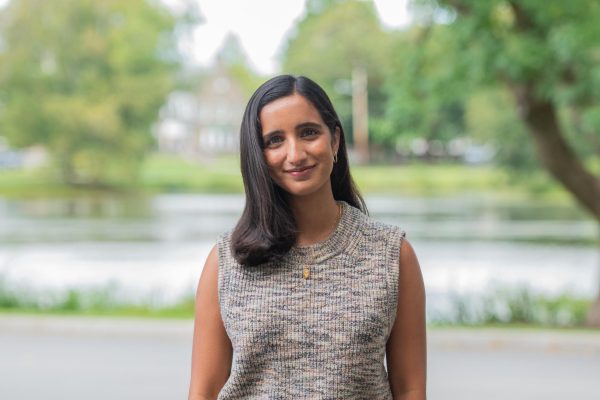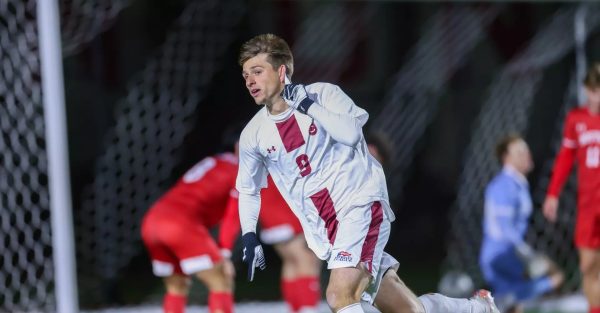ALANA Hosts Conversation on the Intersectionality of Black and Indigenous Identities

The ALANA Cultural Center and Mosaic started a conversation about the intersectionality of Black and Indigenous identities and how systemic racism, particularly in the form of racialization against mixed-race individuals, exists in the present day with their event, “BIPOC is more than just an acronym: A conversation about the intersectionality of Black and Indigenous Identities.” The event, which took place on Thursday, Feb. 18, was moderated by Dr. Andrea Maldonado, who graduated from Colgate in 1997 with majors in sociology, anthropology and Native American studies.
The event also featured two guest speakers, James Ciccone ’77 and Rocio Gil. After graduating from Colgate, Ciccone earned a law degree from Albany Law School but left the practice to become a ghostwriter. Rocio Gil is a professor of Anthropology at the Universidad Autonoma Metropolitana Iztapalapa in Mexico City, New Mexico. In addition to being a professor, Gil is also a collaborator at Afroindoamérica: Red Global Antirracista, an international network against racism. She has studied the lives and the racialization of the Black Seminole people in the Coahuila-Texas Borderland.
The two speakers and moderator carried on an engaging and complex conversation that reached topics including the concept of BIPOC, racial “otherness,” race relations and how a system of racialization has hurt BIPOC individuals. Ciccone’s historical fiction book A Good Day to Die, which was nominated for two Peacemaker Awards after being published last summer, provided a great jumping-off point for the discussion. Ciccone said that the book, which is centered around the life of Cherokee Bill, seeks to analyze how Western novels discuss racism in Native American territories and the ideology that sustained it during the 1890s. While the novel is classified as historical fiction, it does not suspend honesty when discussing race and racism. The protagonist, Cherokee Bill, whose full name was Crawford Goldsby, was an American lawbreaker who conducted a killing and crime spree during the late 19th century. Goldsby came from a mixed-race background, which led to a larger discussion about what that meant for both Cherokee Bill and BIPOC individuals today.
When talking about the concept of BIPOC, Gil mentioned that the term has become more widespread since the racial and political turmoil of Summer 2020. She said the term pulls a diverse group of people together, and while that can seem helpful, mixed-race people need to be more included in conversations about racism and prejudice.
When asked what college students can do to best educate themselves about BIPOC, intersectionality and systemic racism, Dr. Maldonado drew upon Ciccone’s previous response.
“I asked Mr. Ciccone how he thought his book could speak to Colgate students… he thought that Colgate students would be more interested in learning about his career path, particularly how he transitioned from practicing law to becoming a full-time writer… I am wondering if it behooves all of us who aim for social justice to come together around our similarities (our desire to be successful at what we do in life, for example) while also recognizing our differences,” Maldonado said.
Both speakers made nuanced points about the nature of racism against BIPOC individuals that existed during the 19th century and continues to prevail today. Gil mentioned that the racism that BIPOC individuals face today developed in the 1800s. Cherokee Bill was one of many individuals who encountered discriminatory social circumstances. However, as the speakers pointed out, having a mixed racial background is still a difficult identity to navigate today. Ciccone argued that the concepts of racism, racial “otherness” and racial categorization that he wrote about have adapted since the 19th century. Gil mentioned specific mechanisms that are used to racialize BIPOC, including hypodescent as well as colonialism and racism, which resulted in many BIPOC having their identities ignored.
“Race, ethnicity, social class, gender, sexuality and any other category used to describe humans are social constructs with rich histories and lived consequences that vary in meaning across the world. Learning how these meanings intersect is a powerful resource to those committed to bridging divides and becoming allies to one another,” Maldonado said.

Maya Karkhanis is a senior from Hillsborough, NJ concentrating in international relations, religion, and Asian studies. She has previously served as an...








